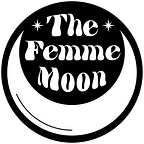Elizabeth Bathory: The Lady is a Vamp
Elizabeth Bathory was a powerful Hungarian countess during the late 1500’s, known to have tortured and murdered roughly 600 individuals, primarily young women.
Thus, Bathory is considered to have the highest number of victims, her body count surpassing most repeat murderers by double, if not triple, making her the most prolific serial killer in history.
Also known as Countess Erzsebet, Bathory holds legend with others of similar history. Related directly to multiple voivodes of Transylvania and married to Ferenc Nádasdy, a military leader against the Ottoman Turks, particularly cruel to prisoners in his time, Bathory reigned over their region while her husband was at war. Accounts of Bathory’s crimes are claimed to have been mostly exaggerated, used as fantasy for vampire folklore that lives on today, much like Vlad the Impaler, the inspiration for Dracula (who was also argued to have been Hungarian, not Romanian). However, both infamous figures did appear to lust for murder in cold blood, with lack of sympathy, enough to have been investigated and condemned, punished and imprisoned, for their brutal deeds.
Bathory truly resembled a Dracula-like character in comparison to Vlad, whose victims were mostly killed in prison or during the Crusades a hundred or so years earlier. Like Dracula’s castle, with servants and guest-victims draped in decadent finery, Bathory was said to lure young maidens, often servants of the lower rank, onto the estate, entertaining them until ensuing in a ritualistic slaying. Furthermore, Bathory’s murders were part of her personal care: she fervently believed that bathing in the blood of her victims would restore her youth. Centuries before the cosmetic industry sold “anti-aging” by the billions to gullible consumers, Bathory was slicing women to bits to ensure her own glow. Kim Kardashian’s “Vampire Facelift” pales in comparison to Bathory’s beauty regime.
Other myth states that Bathory drank blood, dabbled in black magic, had lesbian lovers that were also accomplices in the elaborate methods of killing virgins which included sadist non-consensual sexual acts. It’s difficult to say if these accounts were true considering the centuries passed and that, word against word, tall tales were strategically used to bring entire royal families down. It is, however, known that Bathory lived from 1560 to 1614 and died in a stone room without a door, a precaution deemed necessary and perhaps some proof that she posed a real threat to the local villagers.
It’s no wonder that Bathory’s story paved a path to a horror-fantasy characterization. Mix vanity, control and murder, and it is easy to imagine a modern day heiress who feeds off the young, easily overtaken by jealousy, relinquishing in her dirty rich world and most certainly donning Chanel’s “Rouge Noir” on her talons (as transcribed in ’90s fashion mags, the nail polish shade was simply known as “Vamp”). Like some hyper-sexualized portrait that fashion photographer Helmut Newton would shoot, even though feminist critics argued that Newton’s gaze of women reduced them to upper-class sex dolls, objectified and reduced to her prowess, there is no denying that in her blood red lipstick, the part seductress, part man-eater Bathory archetype fascinates by defying feminine morale, easily stabbing holes in any foe who crossed her path with the spike of a very dangerous high-heeled shoe.
As we’ve been on the subject of the Femme Fatale in the previous post, Bathory embodies a perverse entity many First World women reflect, adjacent to this theme. Writhing around in the 7 Deadly Sins, toting cocaine in a designer handbag, grotesquely fashionable and always getting her way, this particular brand of Femme Fatale, always wanting more, resistant to the natural seasons of aging, full of greed and the capitalist trinkets of imperialism.
Bathory’s likeness inspired troves of works, including a few Hungarian operas and the glam-horror of . The poetry-drenched Gothic fairy tale by Romanian-born Bathory ancestor Andrei Codrescu, The Blood Countess, is a harrowing work of historical fiction. Of course, it is no surprise that Bathory was a cornerstone in the metal genre, starting with the hugely influential ’80s Swedish band of her same name. Bathory’s primary songwriter Quorthron, “a prince who’s half-human and half-demon”, incorporated synth with Norse Mythology and, regardless of interest in evil, was not the Satan-worshipping church-burner or brain-eater like others communal to the Lords of Chaos crew; Quorthron was a vegetarian who loved Kate Bush’s Hounds of Love. Sunn 0))) houses a song under Elizabeth Bathory’s native name, Báthory Erzsébet:
Here. Decompose forever, aware and unholy, encased in marble and honey from the swarm, a thin coat of eternal whispering that bleaches from within, a darkness that defiles thought, stolen by the wingless harpies whose memories lay waste the valley of diamonds, where the great One sleeps, her eyes, placid pits of violent tar and bitumen regurgitated by demons chained to misery, eyes that see nothing for there is only the darkness that wells up from inside, a great viscous cloud smothering hope, a blanket woven from the dung of the old ones, their disease the tapestry of all that is futile, her gaze burning holes in the veil that protects the chosen, her breathe a plague that unleashes the frozen wolves, blind, their tongues paint your heart with scorpions, their pestilence an invitation to the only one that matters for She is the presence that is all that is un-named, for it is Her, the unbegotten Mistress of the eternal hunger, dwell forever in her great unholy stomach where the damned befoul themselves in the glory of her fecund and bloody history, worship in the torment of a million wasted lives, bathe in the horror that the blood of time carries with the plague, and befoul yourself with worship, for she hates you eternally with the ferocious lust that binds all that inhabit the wasted and forgotten, the blissful loathing of you is now all that remains, alone, forgotten and Damned.
